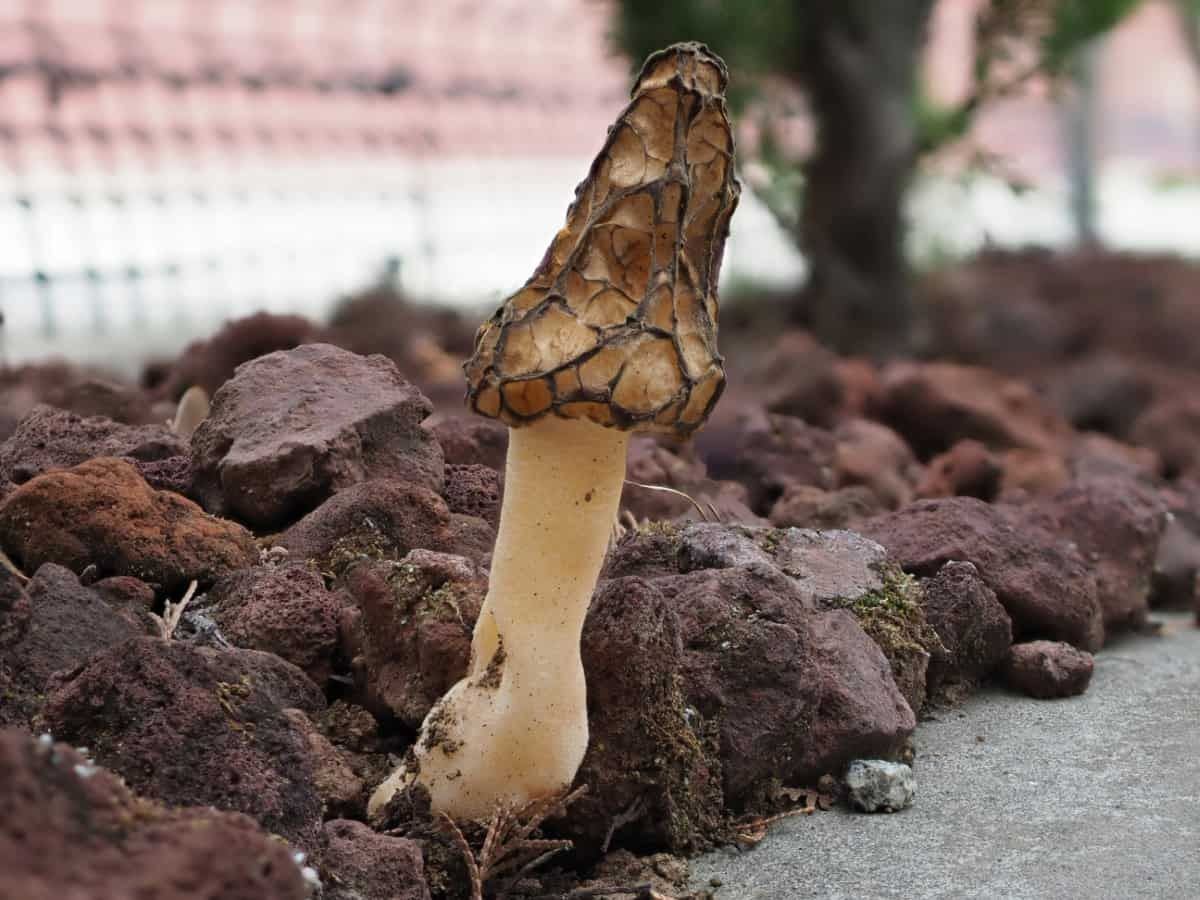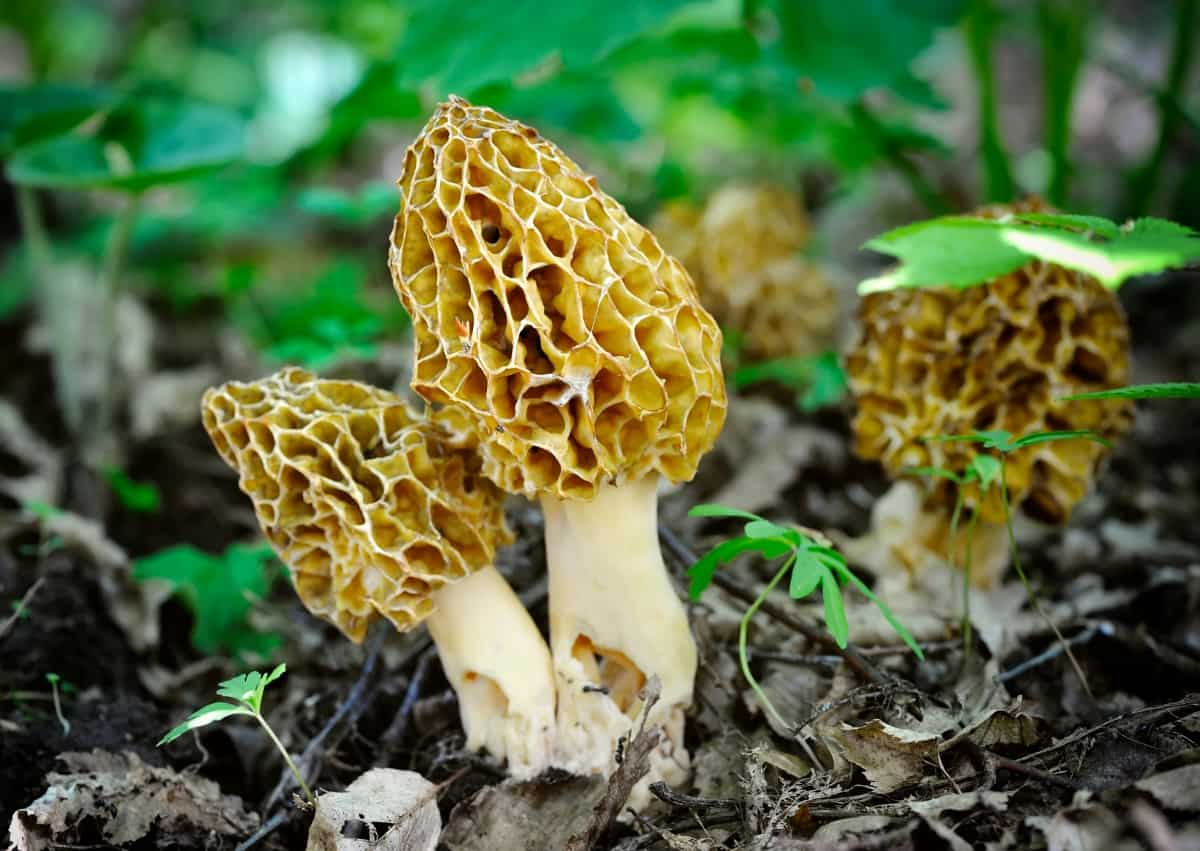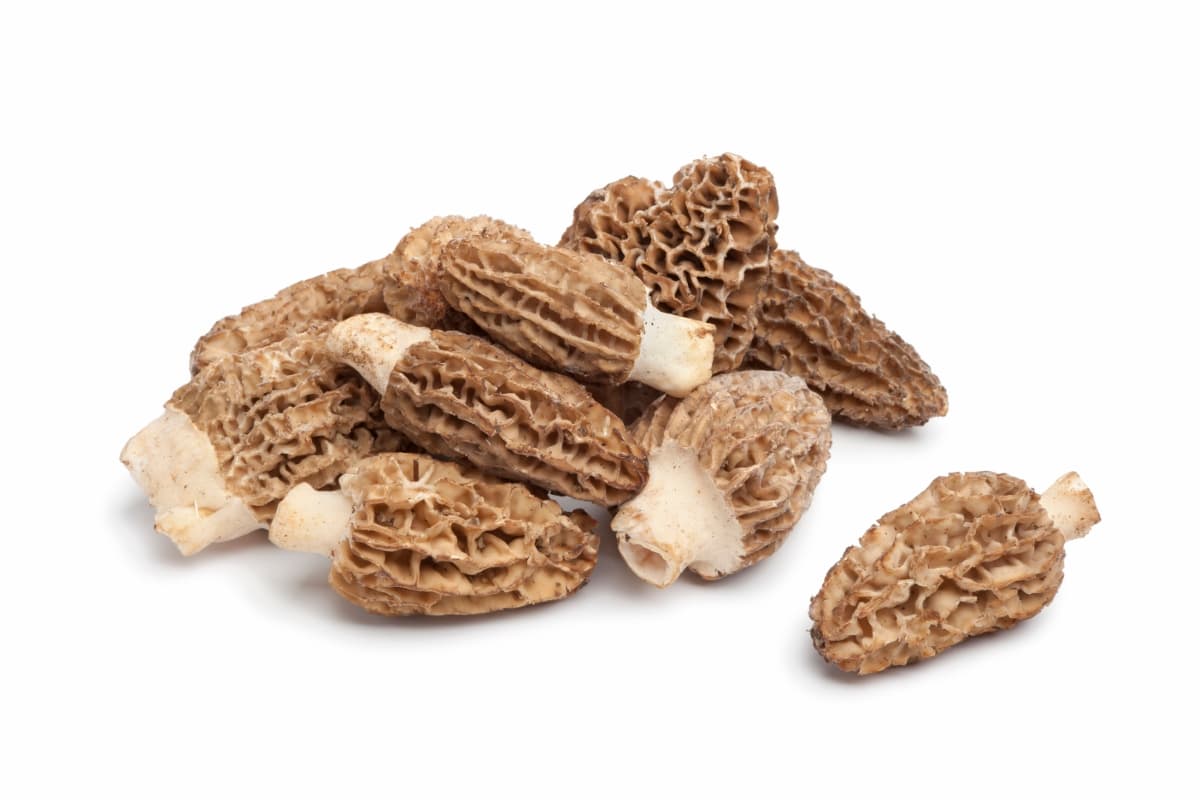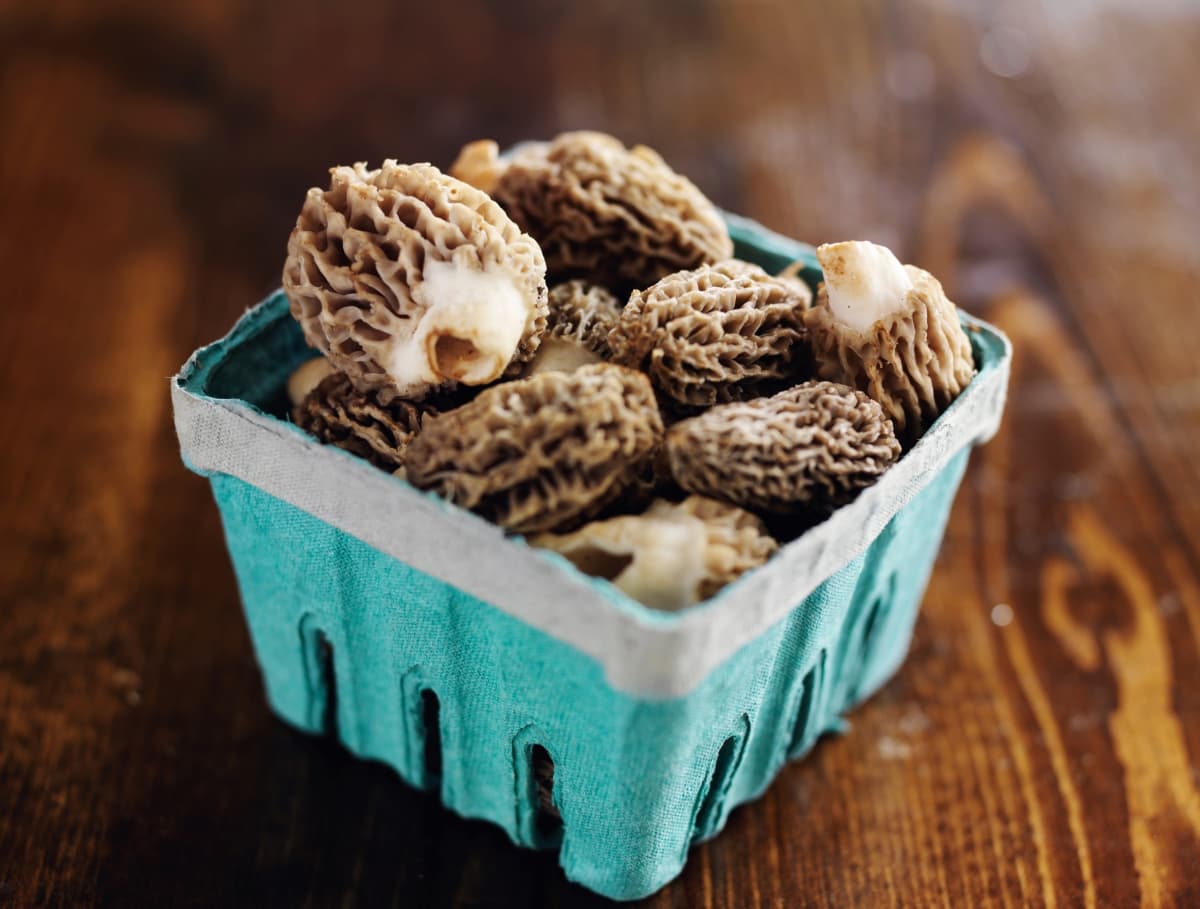Morel Mushrooms, also known simply as Morels, is a highly sought-after delicacy in the world of culinary delights. These distinctive fungi belong to the Morchella genus and can grow in various parts of the globe. By cultivating your own, you can enjoy Morels’s rich and earthy flavors whenever you desire.

How to Grow Morel Mushrooms from Spores
Understanding Morel Mushrooms: An Introduction to the Fungi Kingdom
Morel Mushrooms, with their distinct and intricate appearance, belong to the fungi kingdom. This vast kingdom is filled with fascinating organisms that play crucial roles in ecosystems worldwide. Unlike plants, Morels lack chlorophyll and cannot produce food through photosynthesis.
One aspect of Morel Mushrooms is their role as decomposers. They break down dead plant material and recycle nutrients into the soil, helping maintain healthy ecosystems. Moreover, the fungi kingdom encompasses an incredible diversity of species beyond Morels, from colorful bracket fungi growing on tree trunks to delicate fairy ring Mushrooms appearing overnight after rainfall.
The Life Cycle of Morel Mushrooms: From Spores to Fruit Bodies
The life cycle of Morel Mushrooms is a fascinating journey, starting from tiny spores and culminating in the emergence of beautiful fruit bodies. It all begins when mature Morel Mushrooms release their spores into the environment. These microscopic spores are dispersed by wind or other means, eventually finding a suitable settling spot.
Once settled, the spores develop thread-like structures called mycelium, which spread out and penetrate the growing medium. This mycelium is a network that absorbs nutrients and water from its surroundings. Over time, the mycelium grows and forms a complex underground structure called primordia. The primordia are small nodules that contain the genetic material needed for fruit body development.
These primordia expand rapidly under favorable conditions such as temperature fluctuations and moisture levels. If you’re a Mushroom enthusiast but don’t have access to outdoor space or the ideal growing conditions, an indoor Morel Mushroom growing kit might be the perfect solution for you. Select the best Morel Mushroom growing kit, and these kits provide everything you need to cultivate your own delicious and unique Morel Mushrooms from the comfort of your home.
Selecting the Right-Growing Medium for Morel Mushroom Cultivation
One of the most popular growing mediums for Morels is a mixture of composted organic matter, such as straw or wood chips, and sterilized soil. This provides a rich source of nutrients while retaining moisture, which is essential for the growth of these delicate Mushrooms. How to plant Morel Mushroom spores in sawdust? Another option is to use sawdust as a growing medium. Morels can be cultivated using sawdust from hardwood trees like oak or maple. The sawdust should be mixed with gypsum and water before being packed into containers or bags.
In case you missed it: How to Grow Mushrooms in Greenhouse: A Step-By-Step Guide for Seed to Harvest

It’s important to note that Morels are mycorrhizal fungi, meaning they form beneficial relationships with tree roots. Therefore, incorporating tree root material into the growing medium can enhance their growth and development. By carefully choosing the appropriate growing medium and providing optimal environmental conditions, you can increase your chances of successfully cultivating Morel Mushrooms at home or on a larger scale.
Preparing Morel Mushroom Spores for Planting: A Step-By-Step Guide
- Harvesting: Start by gathering fresh Morel Mushrooms from a reliable source. Look for mature specimens with intact caps and stems.
- Extracting Spores: Carefully cut off the Mushroom caps, ensuring not to damage them. Place the caps in a clean, sterile container with a dark-colored lid.
- Releasing Spores: Leave the container undisturbed in a moist environment for at least 24 hours. During this time, spores will be released onto the surface of the lid.
- Transferring Spores: Using sterilized tweezers or a toothpick, gently remove the lid from the container and transfer it to another sterilized dish containing your chosen growing medium (such as sawdust or peat moss).
- Incubation: Cover the dish with plastic wrap or place it inside an enclosed terrarium to create optimal humidity levels for spore germination.
- Patience and Observation: Keep an eye on your spore-filled dishes over several weeks as white mycelium threads start spreading across their surfaces – this indicates successful colonization.
Creating an Optimal Growing Environment for Morel Mushrooms
Firstly, Morels require well-draining soil that is rich in organic matter. They prefer acidic to neutral soil pH levels ranging from 5.5 to 7.0. Next, consider the lighting requirements for Morel Mushrooms. While they prefer filtered or partial shade, direct sunlight should be avoided as it can dry out delicate fruit bodies. Maintaining adequate moisture levels is crucial for Morels’ growth and development. The ideal moisture range is between 60% to 80%.
Check the soil moisture content and adjust watering accordingly to prevent overwatering or drying out. Proper ventilation is vital in creating an optimal environment for Morel Mushrooms. Good air circulation helps prevent fungal diseases and ensures that carbon dioxide is exchanged efficiently during their growth process. Consider using mulch around your Mushroom beds or containers. This helps retain moisture while suppressing weed growth that competes with Morels for nutrients and space.
Planting Morel Mushroom Spores: Techniques and Best Practice
One technique for planting Morel spores is known as “sowing.” This involves scattering the spores over a prepared bed or area in your garden. The bed should be well-drained and rich in organic matter. You can also add wood chips or sawdust to provide additional Mushroom nutrients. Another method, called “spore slurry,” involves mixing the spores with water and applying the mixture directly onto a suitable substrate.
In case you missed it: How to Grow Psilocybin Mushrooms at Home: A Comprehensive Guide

While pests and diseases don’t typically affect Morels heavily, protecting them from threats such as slugs or snails is still important. Natural deterrents like crushed eggshells or diatomaceous earth can help keep these pests at bay. Harvesting Morel Mushrooms requires careful attention too. It’s best to pick them when they have fully matured but before they release their spores into nature. Store them in paper bags or breathable containers in a cool place until you’re ready to use them.
Caring for Morel Mushroom Beds: Watering, Fertilizing, and Mulching
Proper watering is essential for healthy Morel Mushrooms growth. These fungi require a moist environment to thrive, but overwatering can lead to problems such as mold or rot. Water your Morel Mushroom beds regularly but avoid saturating them to strike the right balance. Morels are unique in that they form a symbiotic relationship with certain tree roots.
This means they receive nutrients from the surrounding soil through these roots. Mulching can benefit Morel Mushroom beds by helping retain moisture and regulate temperature levels in the soil. However, choosing an organic mulch material like straw or wood chips is important because that won’t introduce harmful chemicals into your growing environment.
Protecting Morel Mushrooms from Pests and Diseases
Pests and diseases can significantly threaten the health and productivity of your Morel Mushroom beds. It’s crucial to implement effective strategies for protecting these precious fungi. One main pest that can wreak havoc on Morels is slugs. These slimy creatures are attracted to the moist environment of Mushroom beds and can quickly devour young Mushrooms. Consider applying organic slug repellents or creating physical barriers such as copper tape around your growing area to keep them at bay.
Another potential threat is mold and other fungal infections. Morels are susceptible to various types of molds, which can stunt their growth entirely. To prevent this, maintain proper ventilation in your growing space by providing adequate air circulation. Regularly inspect your Mushroom beds for signs of pests or disease, such as discolored patches or unusual growth patterns. If you notice any issues, immediately remove infected Mushrooms and adjust environmental conditions if necessary.
Harvesting and Storing Morel Mushrooms: Tips for Maximum Yield and Quality
Harvesting and storing Morel Mushrooms properly is crucial to ensure maximum yield and maintain quality. Morels should be picked when fully mature, with the caps fully expanded and the Morel Mushroom spores starting to release. This ensures you get the most flavor and texture out of your Mushrooms. To harvest Morels, gently twist or cut them at ground level, careful not to disturb the surrounding soil too much.
In case you missed it: Hydroponic Mushroom Farming: Simple Soilless Approach

Once harvested, it’s essential to store Morels correctly to prolong their shelf life. Start by cleaning any debris off the Mushrooms using a soft brush or damp cloth; avoid washing them, as excess moisture can cause them to spoil faster. Place the cleaned Morels in a paper bag or breathable container lined with paper towels for short-term storage. Store them in the refrigerator for up to five days.
Conclusion
Morel Mushrooms, or just Morels, is a wild Mushrooms with an earthy, nutty flavor. Morel Mushrooms are the most desired wild Mushrooms in the world. You can choose organic methods and ensure no harmful chemicals or pesticides are used in their cultivation.
- Feed Your Flock for Less: Top 10 Tips to Save on Chicken Feed
- Ultimate Guide to Ossabaw Island Hog: Breeding, Raising, Diet, and Care
- Hatching Answers: The Top 10 Reasons Your Chickens Aren’t Laying Eggs
- Eggs and Economics: Breaking Down the Cost of Raising Backyard Chickens
- Defend Your Greens: Proven Methods to Keep Iguanas Out of Your Garden
- Ultimate Guide to Cinnamon Queen Chicken: A Comprehensive Guide for Beginners
- Ultimate Guide to California Tan Chicken: Breeding, Raising, Diet, Egg-Production and Care
- Ultimate Guide to Marsh Daisy Chicken: Breeding, Raising, Diet, and Care
- 10 Types of Chicken Farming Businesses You Can Start for Profits